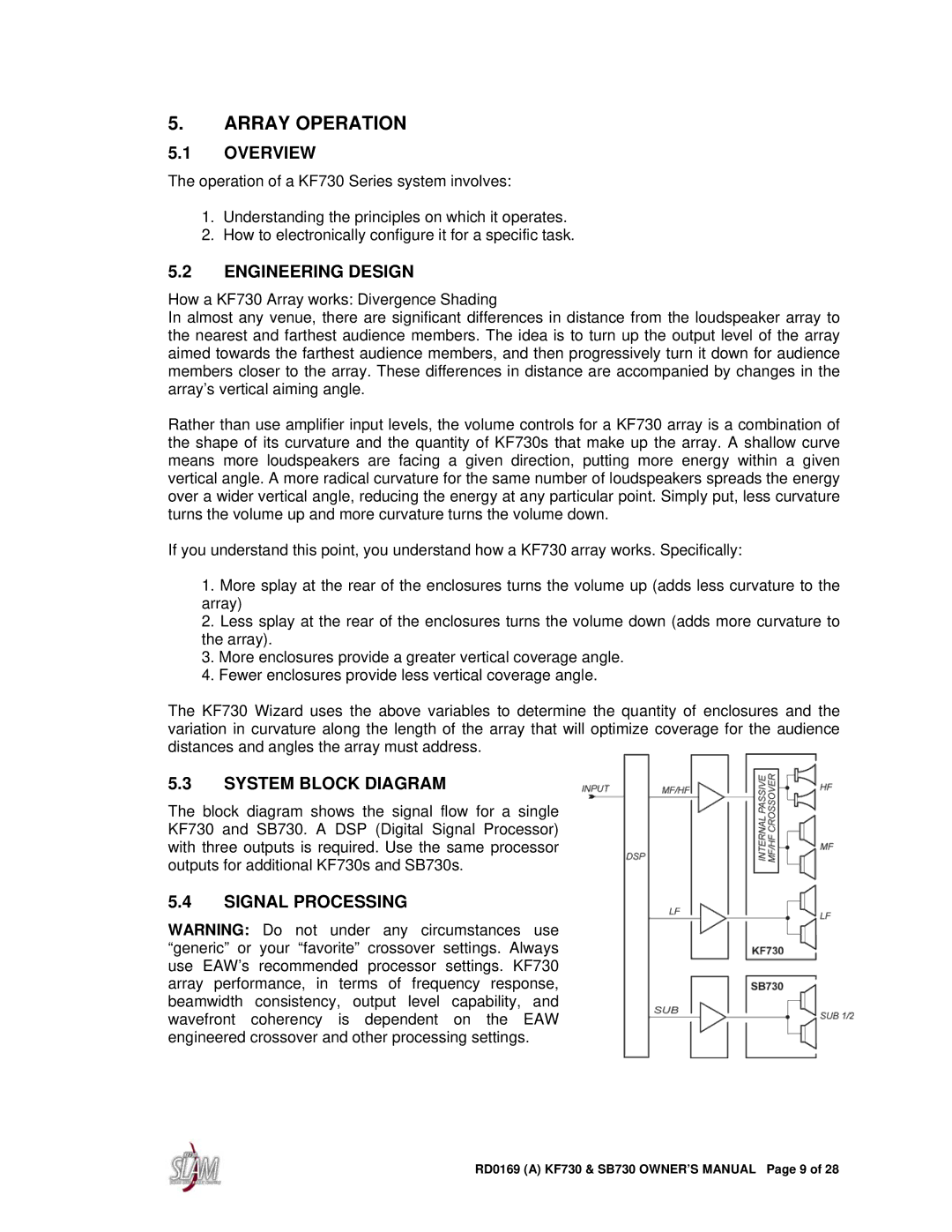
5.ARRAY OPERATION
5.1OVERVIEW
The operation of a KF730 Series system involves:
1.Understanding the principles on which it operates.
2.How to electronically configure it for a specific task.
5.2ENGINEERING DESIGN
How a KF730 Array works: Divergence Shading
In almost any venue, there are significant differences in distance from the loudspeaker array to the nearest and farthest audience members. The idea is to turn up the output level of the array aimed towards the farthest audience members, and then progressively turn it down for audience members closer to the array. These differences in distance are accompanied by changes in the array’s vertical aiming angle.
Rather than use amplifier input levels, the volume controls for a KF730 array is a combination of the shape of its curvature and the quantity of KF730s that make up the array. A shallow curve means more loudspeakers are facing a given direction, putting more energy within a given vertical angle. A more radical curvature for the same number of loudspeakers spreads the energy over a wider vertical angle, reducing the energy at any particular point. Simply put, less curvature turns the volume up and more curvature turns the volume down.
If you understand this point, you understand how a KF730 array works. Specifically:
1.More splay at the rear of the enclosures turns the volume up (adds less curvature to the array)
2.Less splay at the rear of the enclosures turns the volume down (adds more curvature to the array).
3.More enclosures provide a greater vertical coverage angle.
4.Fewer enclosures provide less vertical coverage angle.
The KF730 Wizard uses the above variables to determine the quantity of enclosures and the variation in curvature along the length of the array that will optimize coverage for the audience distances and angles the array must address.
5.3SYSTEM BLOCK DIAGRAM
The block diagram shows the signal flow for a single KF730 and SB730. A DSP (Digital Signal Processor) with three outputs is required. Use the same processor outputs for additional KF730s and SB730s.
5.4SIGNAL PROCESSING
WARNING: Do not under any circumstances use “generic” or your “favorite” crossover settings. Always use EAW’s recommended processor settings. KF730 array performance, in terms of frequency response, beamwidth consistency, output level capability, and wavefront coherency is dependent on the EAW engineered crossover and other processing settings.
RD0169 (A) KF730 & SB730 OWNER’S MANUAL Page 9 of 28
